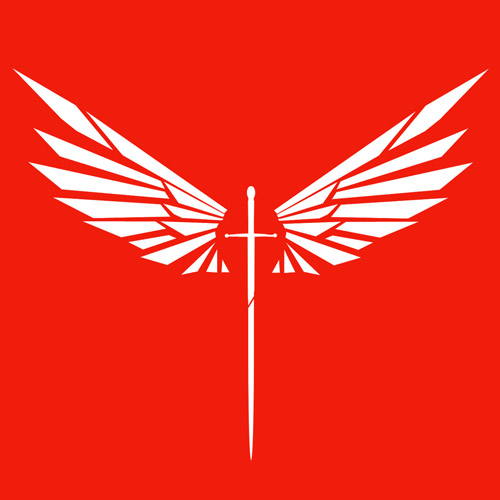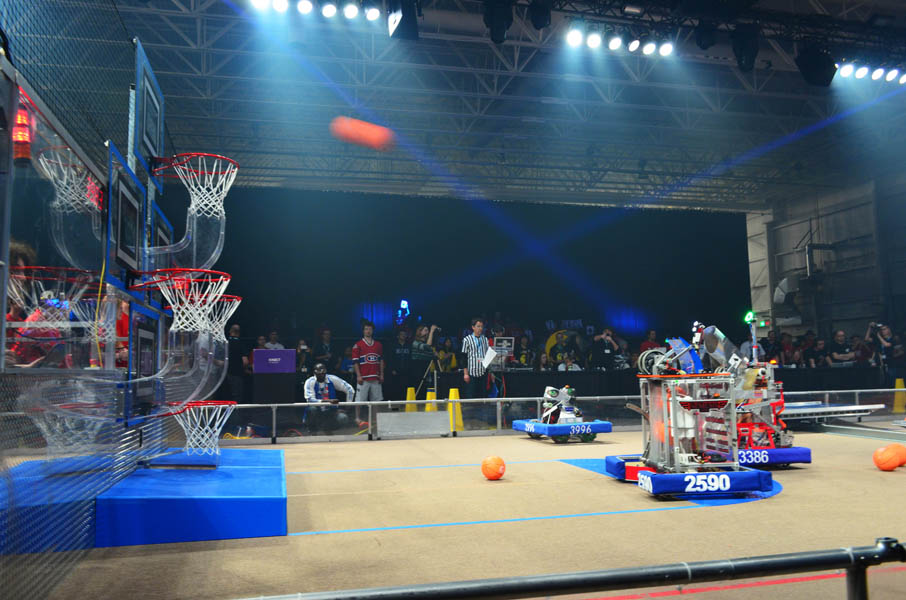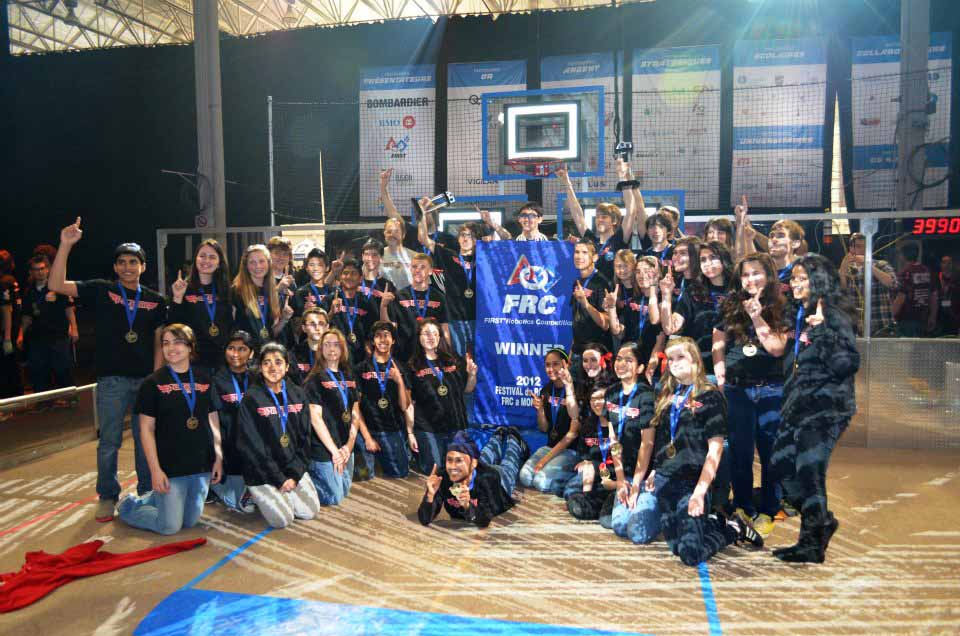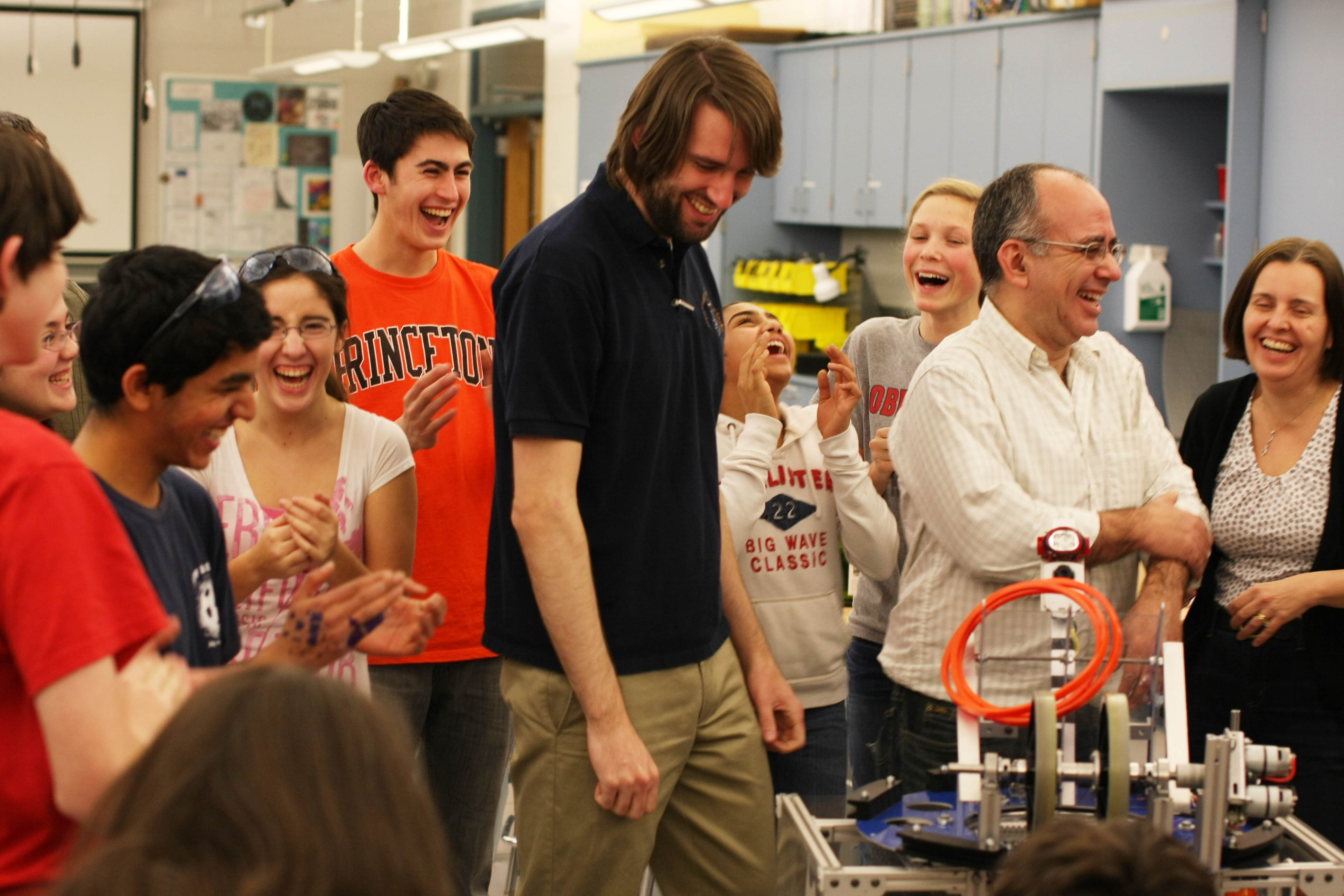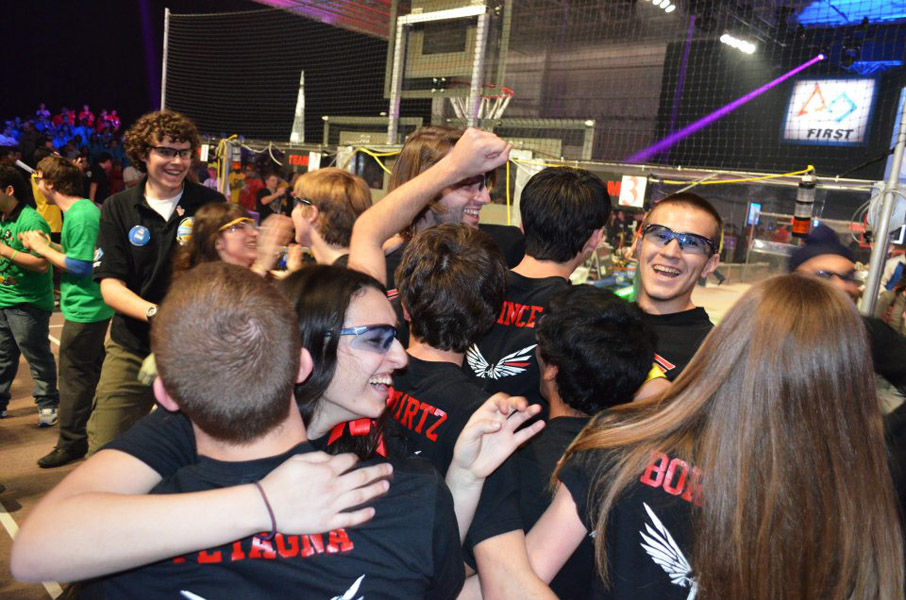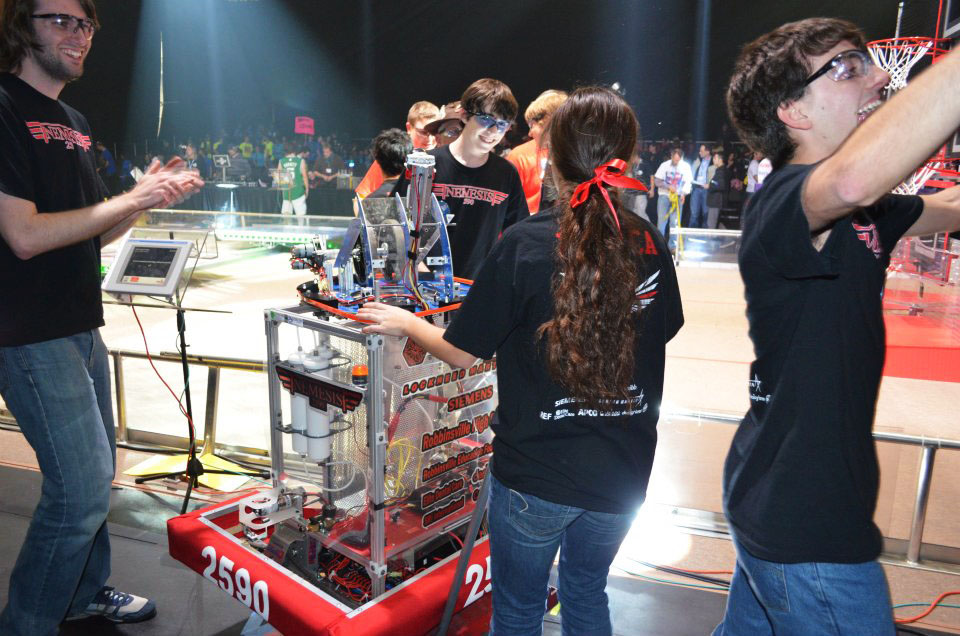Prince
2012
Stats
| Record | 61-33-01 |
|---|---|
| MAR Rank | 9 |
| Drive Team | Eric Principato, Matt Schwartz, Chris Banziger |
| Awards | FIRST World Championship - Archimedes Division Semifinalist Montreal Regional Champions Montreal Regional Entrepreneurship Award Mid Atlantic Regional Best Web Site Award Lenape District Champions Lenape District Chairman's Award Lenape District Best Web Site Award Hatboro-Horsham Entrepreneurship Award |
”Prince,” named after the team’s CEO Eric Principato, will be competing in district and regional FIRST Robotics competitions culminating in what the team hopes will be a strong showing in the 2012 national championship in St. Louis.
The FIRST Robotics challenge for this year is called “The Rebound Rumble,” a competition that requires the students’ robot to earn points by shooting basketballs into hoops of varying heights inside an arena. The students need to work with their team and in alliances and “coopertition” with other teams for maximum points.
The robot, which has a shooter, a rotating turret and a conveyor, uses a camera to locate the basketball hoop’s backboard, calculate the distance of the shot, set the appropriate speed and then fire the ball into the hoop at a 50-degree angle.
excerpt from Robotics Team Ready to 'rumble'
Written by Rachel Lavery, Special Writer
This article appeared in the Messenger-Press on Wednesday, February 22, 2012
Reflections on 2012 Rebound Rumble and the World Championship
Written by Eric Principato
As I enter the St. Louis Convention Center for the first time on Thursday morning, the magnitude of the event is overwhelming. Teams yelling “Robot! Make way” are heading to the competition field, a few teams are carrying toolboxes to the pits, and a group of students sporting Mohawks are heading to the stands. I head to the pits to meet up with my team and enter a sea of 400 FRC teams and at least as many FTC and FLL teams. The morning is spent in the pits checking all robot systems, deploying new code, and running practice matches. We have our first qualification matches that day.
The next morning every team heads into the stands of the Edward Jones Dome for opening ceremonies. The scale of the competition is enormous with four division fields and a champions’ field occupying the floor of the dome. Bright lights glare down onto the fields and walkways between fields are empty of their usual robot traffic. Dean Kamen, an inventor and the founder of FIRST, steps up onto a stage at one end of the stadium. He speaks about the future of the country, the need for a new generation of engineers and scientists who will create new wealth, and the role of FIRST in doing so. He is not an extraordinary speaker, but the gravity of his speech and the conviction in his eyes are compelling. He ends his speech and the stadium erupts into cheers, then exits to prepare for the upcoming matches.
Competition is intense; between matches the pit crew changes the battery, scouts compile match data of teams, the drive team—which I am part of—talks about strategy with other teams for the upcoming match, and the robot gets tested on the practice field. Then it is time to queue and we roll the robot cart out to the Archimedes division field. Our robot has to endure nine qualification matches and then either be in the top eight teams or be selected by one of the top eight teams to advance to division eliminations. Because the matches consist of alliances of three robots, a total of 24 will make it to eliminations.
The matches are fast-paced, only 2 minutes and 15 seconds long, and our team does well. However, during some matches the robot misses shots and afterwards we take time on the practice field to recalibrate. Meanwhile the scouting team is recording match data and will later compile a list of teams to pick or to try to be picked by. Later in the day, the judges walk by. I tell the technical judges about every aspect of the robot: the drive train, the conveyor, the turret, the camera target tracking, and the dashboard. They are very interested in our tracking system and targeting display. At the same time, the marketing and finance teams explain to the business judges that our team is run like a high-tech startup and hand out copies of the business plan.
All day long the pits are a sea of multicolored shirts; team members walk around the pits to get a look at the perfectly machined robots of some of the elite teams, underclassmen stop at pits to collect pins that teams hand out, mascots are escorted around by a couple team members, and robot carts roll through aisles on their way to the dome.
By the end of Friday, we are all exhausted, but there is still more work to do at the hotel. The scouts, senior team members, and a couple of mentors file into my room to log the day’s scouting data into a Google Doc. It is clear who the elite teams are, and though we are not one of them we are a consistent scorer and have a chance to go far in the competition. Later, after a fun pillow fight I go to sleep; tomorrow is going to be a long day.
On Saturday morning we have our last two qualification matches. Strong performances—especially in the last match—propel our team to sixth place, not bad for a field of 100 teams. After our team realizes this we scramble to finalize the pick list. Then the announcer calls the top eight teams onto the field and I walk on to represent Nemesis. The top teams pick each other and when it comes my turn to pick our top pick is still available. I select team 1218, our friends from Pennsylvania. They had a couple tough breaks that kept them out of the top eight and they are a steal for the sixth pick. As the draft serpentines around, I talk with 1218’s representative and we decide on 2851, a team with decent autonomous, good defense, and the ability to triple balance.
The draft ends and I look at our quarterfinal opponents; one of them is last year’s world champion. Despite this we think we can win because the rest of the alliance isn’t as strong. I walk off the field and head back to the pits to help the pit crew bring the robot, batteries, and tools to the field. Once the double elimination matches start there will be no time to go back to the pits.
Eventually our match is on and I am finally behind the glass waiting to drive. The announcer introduces our team and our section of the stands erupts into cheers. “Three, two, one, GO!” The match starts and our team pulls ahead by a huge lead. The best robot on the other team is not working and we win handily. For the second match however, the robot is fixed and the other alliance wins by one point; it’s onto a third deciding match. Our team wins by a solid margin, breathes a sigh of relief, and prepares for the semifinals.
Our whole alliance knows how tough these next matches will be. We are against the second-seed alliance, which consists of two of the best robots in the world. Our whole alliance puts in our best effort, and despite triple balancing—a feat not many robots have completed—we cannot overcome the offensive power of these teams. They defeat us and go on to win the division.
Our team is satisfied with a solid performance, making it farther than we ever have before, and heads to the stands to watch the Einstein field of division champions. The matches are exciting, and when they are over confetti fills the air to celebrate the winners. Though we didn’t win, our team feels like winners. And I realize that is what FIRST is about: not winning or losing, but learning and celebrating technology and engineering.
The Challenge
Rebound Rumble
In Rebound Rumble, each alliance is a combination of three FIRST teams. The game is played on an arena with four hoops at each end — one at 98 inches, two at 61 inches, and one at 28 inches. The hoops at the high, middle, and low heights earn 3, 2, and 1 point(s) respectively. There is a fender at the base of the four hoops, which prevents the robots from touching/harming the hoops. The objective, of course, is to earn the most points.
Each match is 2 minutes and 15 seconds long. The first 15 seconds of the match is the Hybrid period when the robots will be controlled by a team member using a Microsoft Kinect controller. The teleoperated period comprises the remaining 2 minutes in which two drivers from each team will control the robots.
At the end of the match, each alliance will have the opportunity to earn extra points by balancing their robots on either their Alliance Bridge or the Cooperation Bridge. One robot balanced on an Alliance Bridge earns 10 points, two earn 20 points, and all three earn a whopping 40 points during an elimination round. If a robot from each alliance is balanced on the Cooperation Bridge, each alliance earns 2 cooperation points.


